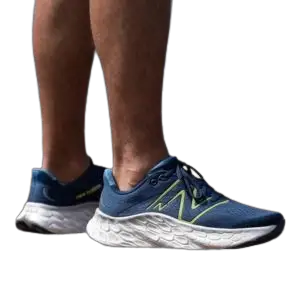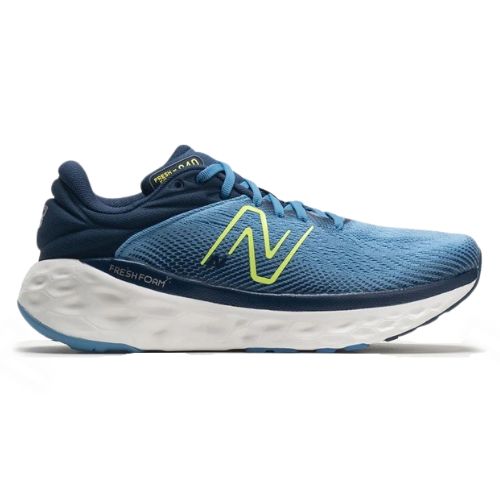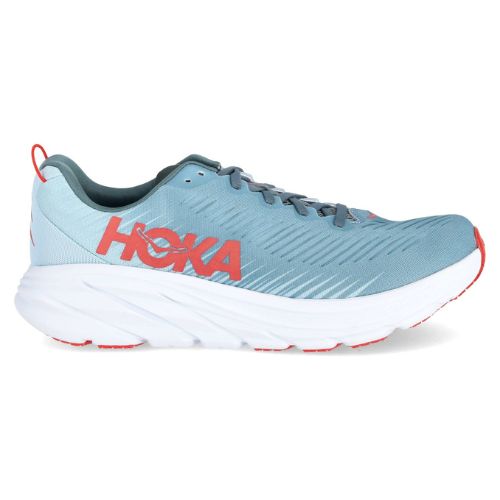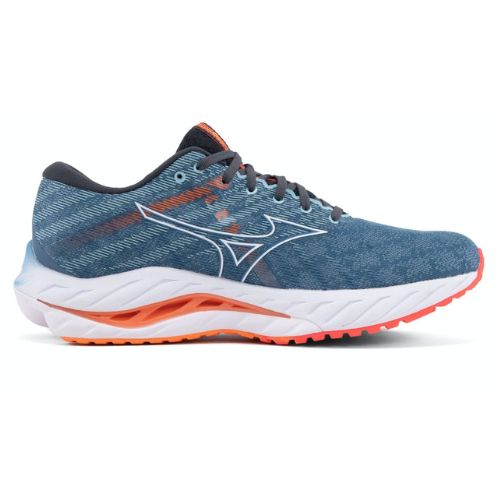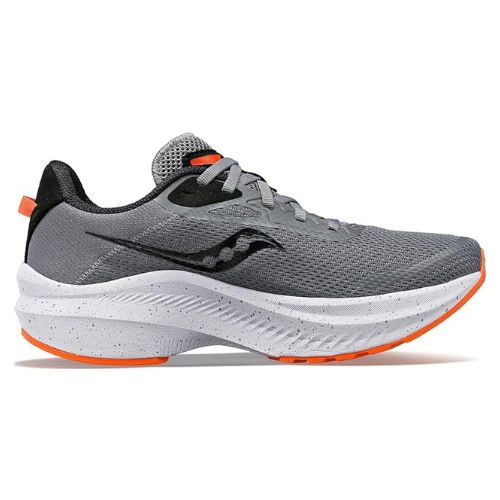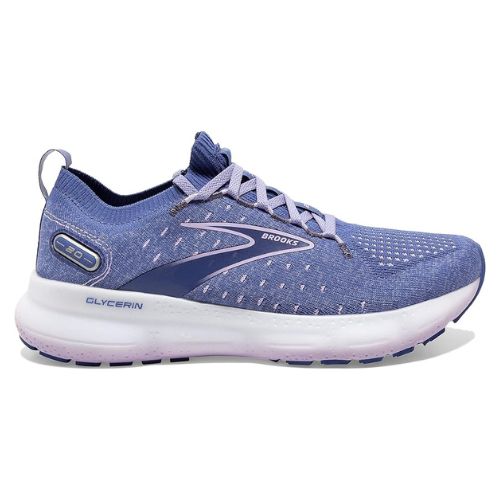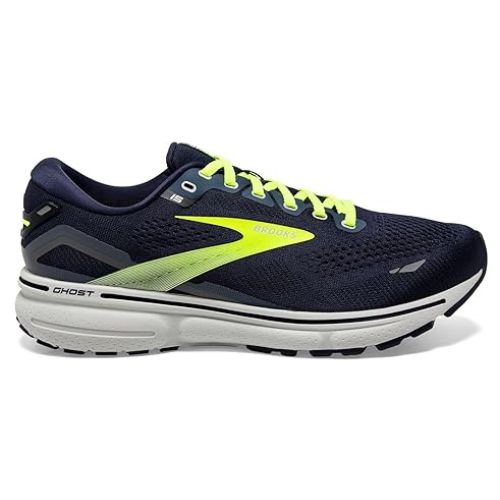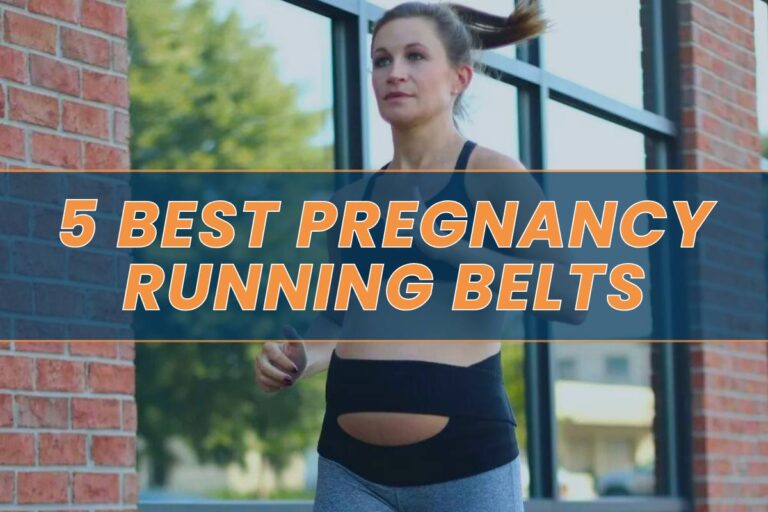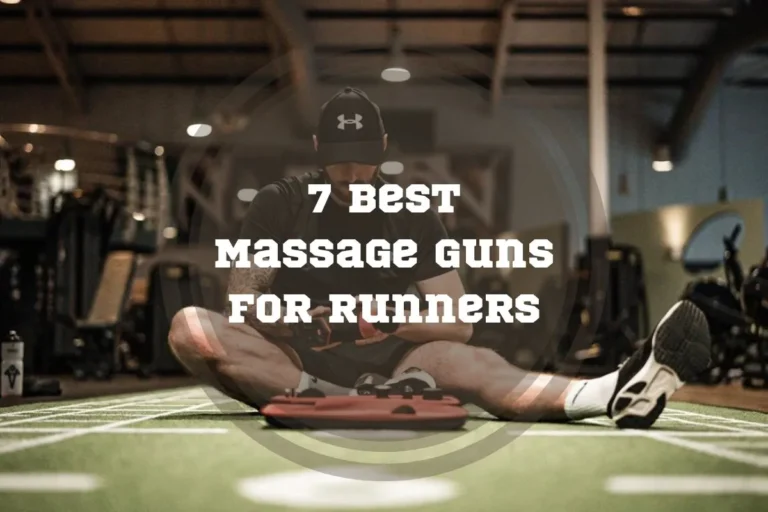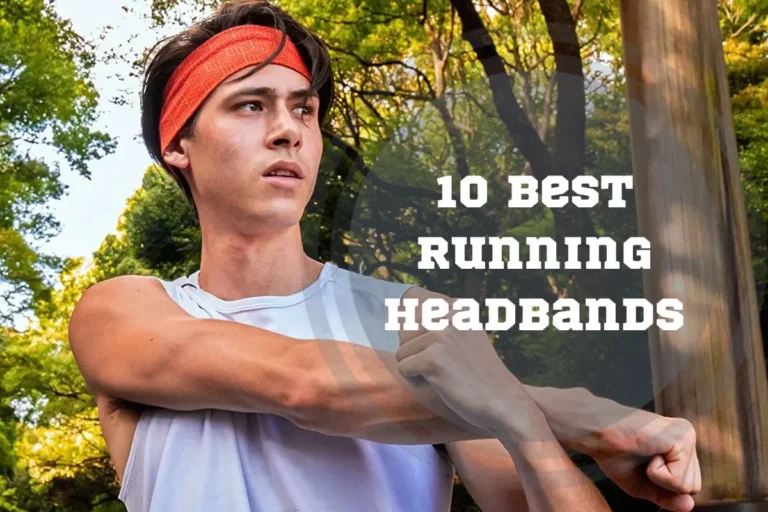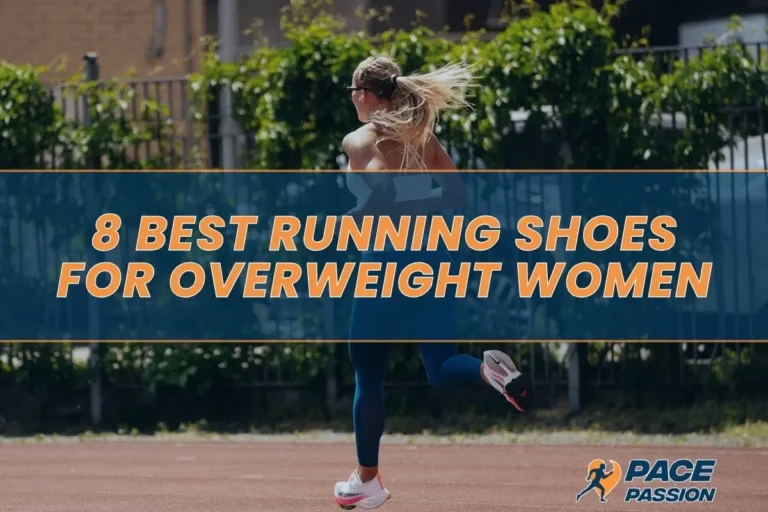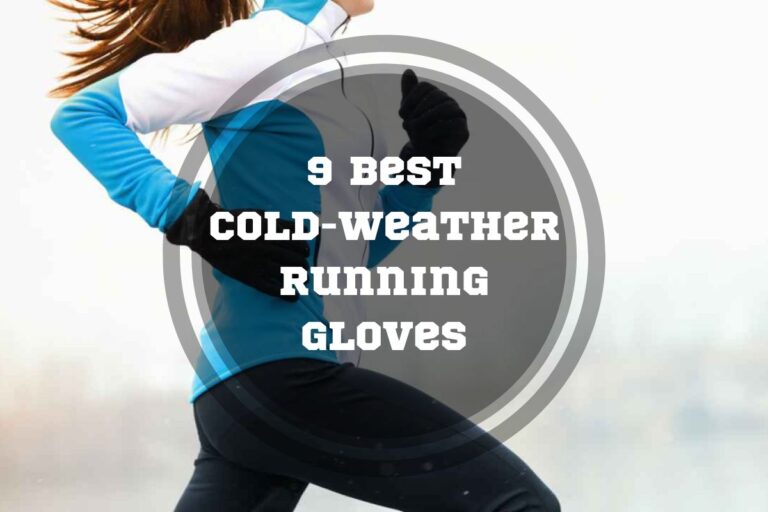8 Best Running Shoes for Sesamoiditis in 2025
Are you a runner dealing with sesamoiditis? Many athletes suffer from this common cause of foot pain related to inflammation in the tendons. Finding the best running shoes for sesamoiditis is key to effectively managing foot pain while running.
In a HURRY? Skip to Our Pick
The New Balance Men’s Fresh Foam X 840v1 is a must-have for runners aiming for peak performance and comfort. These shoes are engineered with Fresh Foam X technology, which ensures superior cushioning and support. Lightweight, breathable, and stylish, it’s an ideal choice for those extended runs.
In this blog post, we will review the top shoes for sesamoiditis to help provide comfort and support when running. From soft cushioning midsoles and stabilizing arch support to shock-absorbing heel cups, discover all of the features that lead to the perfect fit for your feet!
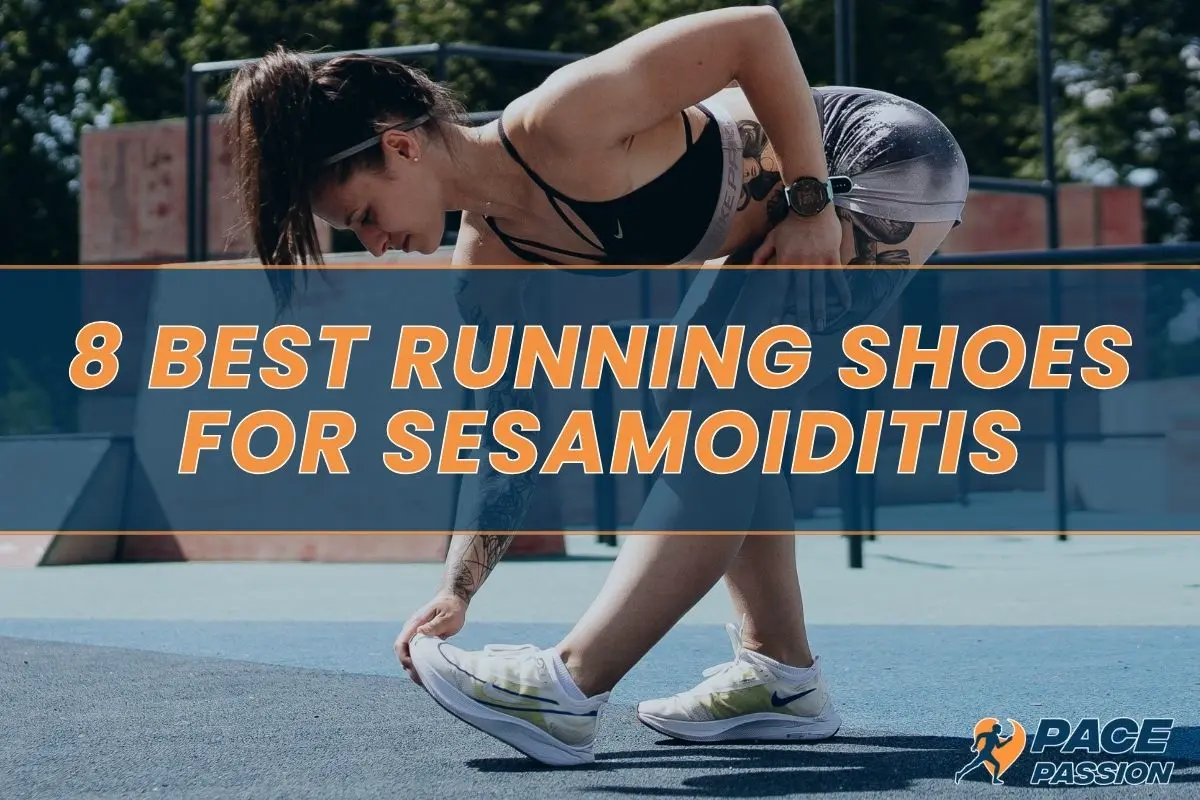
Top 8 Best Running Shoes for Sesamoiditis Reviewed
- New Balance Men’s Fresh Foam X 840v1 – Top Pick
- Altra Men’s Provision 7 Road – Best For Road Running
- Asics Men’s Glideride – Premium Choice
- Hoka One One Rincon 3 – Best For Long Runs
- Mizuno Men’s Wave Inspire 19 – The Most Stylish
- Saucony Women’s Axon 3 – Budget Pick
- Brooks Women’s Glycerin Stealthfit 20 – Best For Women
- Brooks Men’s Ghost 15 – Best For Heel Strikers
Running shoes with extra cushioning and support for the sesamoid bones help to reduce strain and inflammation associated with sesamoiditis. Stiff soles, metatarsal pads, arch support, heel cups, and shock-absorbing materials may provide relief from pain when running.
The right shoe fit is key. Try on different models to find a pair that fits well and provides plenty of room in the toe box. We have reviewed these 8 athletic shoes recommended for sesamoiditis sufferers. They all offer cushioning, support, stability, and more to provide relief from foot pain.
| Product | Expert Score | Comfort and Fit | Breathability | Material | Flexibility | Cushioning | Support and Stability | Value for Money |
|---|---|---|---|---|---|---|---|---|
| New Balance Fresh Foam | 4.9 | 5.0 | 4.9 | 5.0 | 5.0 | 4.9 | 5.0 | 5.0 |
| ALTRA Provision 7 | 4.9 | 4.9 | 4.9 | 4.9 | 5.0 | 5.0 | 5.0 | 5.0 |
| ASICS Men’s Glideride | 4.9 | 4.9 | 4.8 | 4.9 | 5.0 | 5.0 | 5.0 | 5.0 |
| Hoka One One Rincon 3 | 4.9 | 5.0 | 4.9 | 4.8 | 5.0 | 4.9 | 5.0 | 4.9 |
| Mizuno Wave Inspire 19 | 4.9 | 4.9 | 4.8 | 4.9 | 4.9 | 5.0 | 4.9 | 4. |
| Saucony Axon 3 | 4.8 | 5.0 | 4.8 | 4.8 | 4.9 | 4.9 | 5.0 | 4.8 |
| Brooks Glycerin StealthFit 20 | 4.8 | 4.9 | 4.8 | 4.9 | 4.9 | 4.8 | 5.0 | 4.8 |
| Brooks Ghost 15 | 4.8 | 4.8 | 4.9 | 5.0 | 4.8 | 4.8 | 4.9 | 4.7 |
1. New Balance Fresh Foam X 840v1
Top Pick
New Balance Fresh Foam X 840F V1 Men’s Running Shoes
New Balance Fresh Foam X 840v1 is ideal for runners with sesamoiditis, as it provides both comfort and improved form with every stride.
Comfort and Fit:
Breathability:
Material:
Flexibility:
Cushioning:
Support and Stability:
Value for Money:
Expert Score:
The New Balance Fresh Foam X 840v1 offers reliable support and cushioning, as well as a durable rubber outsole and lightweight upper to keep feet comfortable during long-distance runs.
This shoe features a Fresh Foam midsole designed to provide an extremely cushioned ride by reducing impact forces. In addition, the medial post controls overpronation to correctly align feet with each step.
- Material: Synthetic, rubber
- Gender: Men
- Cushioning: Fresh Foam
- Wide-Toe Boxes: Yes
- Arch Support: High
- Stability: High
- Heel Drop: 4mm
- Color: 7 designs
- Weight: 8.6oz
- Size: 7-16 (wide, x-wide)
- Price/Quality: Excellent value for money
Pros:
- Roomy toe box for added comfort.
- Good traction.
- Excellent shock absorption.
Cons:
- This product is pricey compared to others.
- Not as breathable as other versions.
2. Men's Running Shoes Altra Provision 7
Best For Road Running
Altra Provision 7 Road Running Shoe
ALTRA Men's Provision 7 provides maximum comfort when running so you can focus on doing what you love without worrying about unnecessary discomfort or pain.
Comfort and Fit:
Breathability:
Material:
Flexibility:
Cushioning:
Support and Stability:
Value for Money:
Expert Score:
The ALTRA Men's Provision 7 delivers superior support and cushioning specifically for runners who experience overpronation and sesamoiditis issues. It features a stiff and rigid sole that effectively prevents the foot from rolling as it strikes against the ground, thereby limiting pressure on pain points caused by sesamoiditis.
Shock-absorbing materials in the midsole disperse energy upon landing while providing balanced cushioning throughout your stride. Comfort is further ensured with heel cups, metatarsal pads, and arch support.
- Material: Synthetic, leather, rubber
- Gender: Men
- Cushioning: High
- Wide-Toe Boxes: Yes
- Arch Support: High
- Stability: Medium
- Heel Drop: 0 mm
- Color: 6 designs
- Weight: 9.1oz
- Size: 7-15
- Price/Quality: Excellent value for money
Pros:
- Extra durable outsole and upper materials.
- Good support for overpronation.
- Zero drop for sesamoiditis pain relief.
Cons:
- May be a bit narrow for extra-wide feet.
- Too much cushion for runners who need neutral shoes.
3. Asics GlideRide
Premium Choice
ASICS Men's GlideRide Running Shoes
ASICS Men's Glideride Running Shoe offers some of the best protection available today for runners looking to stay healthy over long distances or during high-intensity training sessions.
Comfort and Fit:
Breathability:
Material:
Flexibility:
Cushioning:
Support and Stability:
Value for Money:
Expert Score:
The ASICS Men's Glideride is designed to provide incredibly durable and comfortable support for all types of runners. This shoe features a supportive, responsive midsole along with an aggressive rocker design that helps reduce excessive dorsiflexion and tension on the Achilles tendon.
These comfortable shoes for sesamoiditis also feature a plated design, allowing them to be worn as both a daily trainer or for intense running workouts. They are the ideal choice for runners suffering from ball of foot pain because they keep the feet padded with layers of rubber cushioning while reinforcing support for the arch area.
- Material: Synthetic, rubber
- Gender: Men
- Cushioning: Flytefoam
- Wide-Toe Boxes: Yes
- Arch Support: Medium
- Stability: High
- Heel Drop: 5mm
- Color: 4 designs
- Weight: 10.2oz
- Size: 7-11.5
- Price/Quality: Excellent value for money
Pros:
- Helps save energy on long runs.
- Extra durable outsole and upper materials.
- Stretchy upper mesh for a snug fit.
Cons:
- May feel a bit heavier than other products.
- This model lacks a wide option.
4. Men's Running Shoes Hoka One One Rincon 3
Best For Long Runs
Hoka Rincon 3 Men's Running Shoe
Hoka One One Rincon 3 is light yet supportive, which helps make running more enjoyable.
Comfort and Fit:
Breathability:
Material:
Flexibility:
Cushioning:
Support and Stability:
Value for Money:
Expert Score:
The Hoka Rincon 3 is designed to provide maximum cushioning for a comfortable and responsive ride. Its lightweight construction makes it well suited for long-distance running, while its improved outsole provides increased durability and traction.
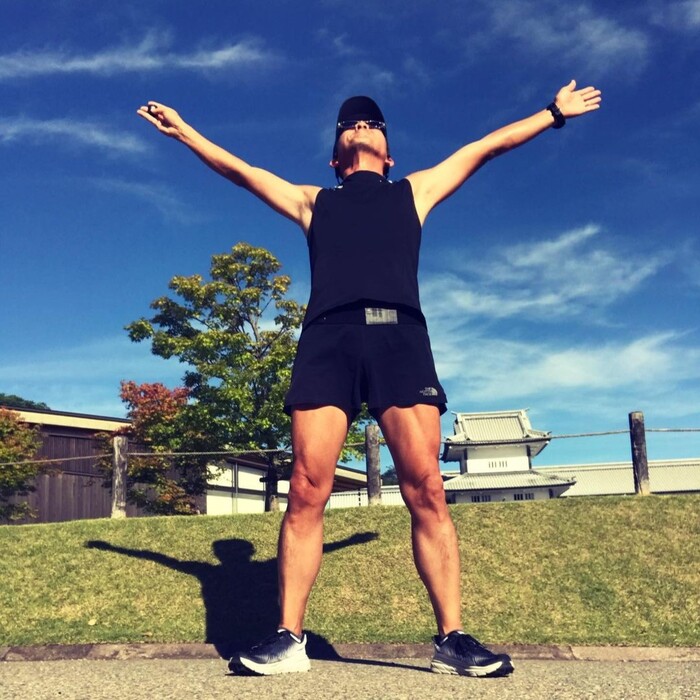
Wearers of the Rincon 3 have praised its ability to allow them to run pain-free, even when dealing with sesamoiditis. Hoka shoes for sesamoiditis have a cushioned midsole that helps reduce pressure on these delicate joints every time they hit ground, providing additional stability along with arch support, heel cups, and metatarsal pads.
- Material: Synthetic, rubber
- Gender: Men
- Cushioning: EVA foam
- Wide-Toe Boxes: Yes
- Arch Support: Medium
- Stability: High
- Heel Drop: 5mm
- Color: 11 designs
- Weight: 7.4oz
- Size: 7.5-16.5
- Price/Quality: Good value for money
Pros:
- Lighter than previous model.
- Durable outsole with good grip.
- More breathable upper compared to previous model.
Cons:
- Some users find the tongue too slim.
- May not fit extra wide feet.
5. Men's Running Shoes Mizuno Wave Inspire 19
The Most Stylish
Mizuno Men's Wave Inspire 19 Running Shoe
Mizuno Wave Inspire 19 is perfect for runners suffering from sesamoiditis, since it provides superior cushioning and protection against overpronation due to the stiff sole design.
Comfort and Fit:
Breathability:
Material:
Flexibility:
Cushioning:
Support and Stability:
Value for Money:
Expert Score:
For runners looking for a moderate stability shoe, the Mizuno Wave Inspire 19 offers excellent cushioning and support. It has a soft forefoot to reduce shock on impact and a slightly higher drop than previous versions of this running shoe.
The rigid construction makes it ideal for those who prefer a firm ride when running. This supportive running shoe comes with heel cups for added stability, arch supports that minimize fatigue along your feet, and metatarsal pads to provide extra comfort.
- Material: Synthetic, rubber
- Gender: Men
- Cushioning: Energy Foam
- Wide-Toe Boxes: Yes
- Arch Support: Medium
- Stability: Medium
- Heel Drop: 12mm
- Color: 11 designs
- Weight: 10.6oz
- Size: 7-16 (wide)
- Price/Quality: Good value for money
Pros:
- Increased breathability compared to previous versions.
- Excellent traction.
- Highly responsive outsole.
Cons:
- Heavier than other products.
- High heel drop may not fit all runners.
6. Saucony Axon 3 Women's Shoe
Budget Pick
Women's Sneaker Saucony Axon 3
The Axon 3 is specifically designed for runners with sesamoiditis, featuring a combination of comfort, support, and durability that help alleviate pain associated with this condition.
Comfort and Fit:
Breathability:
Material:
Flexibility:
Cushioning:
Support and Stability:
Value for Money:
Expert Score:
The Saucony Women's Axon 3 is one of the leading running shoes for sesamoiditis in 2025. It has a sleek, breathable upper designed to keep feet cool and light, even during intense workouts.
It provides a premium feel with PWRRUN cushioning underfoot, which provides dynamic responsiveness for smoother transitions from heel strike to toe-off. The material is also highly durable, making it perfect for those who are serious about running and training.
- Material: Synthetic, rubber
- Gender: Women
- Cushioning: PWRRUN foam
- Wide-Toe Boxes: Yes
- Arch Support: High
- Stability: High
- Heel Drop: 4mm
- Color: 7 designs
- Weight: 8.5oz
- Size: 5-12
- Price/Quality: Good value for money
Pros:
- High-cushioned, yet very responsive.
- Good-quality grip.
- High energy return.
Cons:
- This model lacks breathability in hot weather.
- May not fit extra-wide feet.
7. Glycerin Stealthfit 20 Brooks Running Shoes
Best For Women
Brooks Glycerin StealthFit 20 Women’s Running Shoe
Brooks Women's Glycerin StealthFit 20 are a great option that help keep sesamoiditis under control.
Comfort and Fit:
Breathability:
Material:
Flexibility:
Cushioning:
Support and Stability:
Value for Money:
Expert Score:
The Brooks Women's Glycerin StealthFit 20 are the best women's running shoes for sesamoiditis. Their unmatched softness and extra cushioning give runners an incredibly comfortable ride.
Featuring a Fit Knit upper, these shoes mold to the feet seamlessly, providing breathability and adapting to the running motion for as natural a fit as possible. Their midsole also features nitrogen-infused technology for improved support and cushioning so you can push yourself harder on those intense runs or workouts. All of these features make the Glycerin the best shoes for sesamoiditis - women's choice.
- Material: Synthetic, rubber
- Gender: Women
- Cushioning: DNA Loft v3
- Wide-Toe Boxes: Yes
- Arch Support: Medium
- Stability: Medium
- Heel Drop: 10mm
- Color: 8 designs
- Weight: 8.4oz
- Size: 5-12
- Price/Quality: Good value for money
Pros:
- Snug fit for added comfort.
- Extra cushion and improved midsole shape.
- Upgraded DNA Loft foam for softer support.
Cons:
- High heel drop may not fit all runners.
- Less flexible than the previous version.
8. Brooks Men's Running Shoe Ghost 15
Best For Heel Strikers
Brooks Ghost 15 Men's Running Shoe
Brooks Men’s Ghost 15 is a great choice for sesamoiditis pain relief, offering soft support and various widths for a customized fit.
Comfort and Fit:
Breathability:
Material:
Flexibility:
Cushioning:
Support and Stability:
Value for Money:
Expert Score:
The Brooks Men's Ghost 15 is a high-performing, neutral running shoe designed specifically for runners with sesamoiditis. Created to be comfortable enough for daily use and training runs, this shoe features a high drop design that makes it ideal for heel strikers.
With an accommodating fit suitable for most foot shapes and sizes, the Ghost 15 also features an engineered upper made of lightweight materials that provides secure support while avoiding unnecessary bulk.
Comfort is also enhanced by the supportive heel cups and arch supports, as well as metatarsal pads that cushion stressed areas around the forefoot during long runs.
- Material: Synthetic, rubber
- Gender: Men
- Cushioning: DNA Loft v2
- Wide-Toe Boxes: Yes
- Arch Support: Medium
- Stability: High
- Heel Drop: 12mm
- Color: 39 designs
- Weight: 9.8oz
- Size: 7-15 (narrow, wide, x-wide)
- Price/Quality: Good value for money
Pros:
- Great for sprinting.
- Offers high level of stability for pain relief.
- Improved midsole shape compared to previous version.
Cons:
- Upper materials are not breathable enough on hot days.
- High heel drop may not fit all runners.
- A bit heavier than previous versions.
What Is Sesamoiditis?
The sesamoid bones are located beneath one of the big toe joints and play an important role in providing support for the tendons in the foot. They have a weight-bearing role during activities such as walking, running, hopping, and jumping.
The sesamoid bones absorb shock from daily activities and reduce pressure on other structures of the foot. Sesamoiditis is an inflammatory condition that affects the associated tendons due to overuse or repetitive stress and can cause them to become irritated or injured.
Runners who experience sesamoiditis will likely feel a dull or sharp pain in their foot, usually located beneath the first metatarsophalangeal joint. Other symptoms may include redness and swelling of the affected area, although this can vary depending on the severity of injury.
Since running increases the stress on these tendons, it is important for athletes who experience sesamoiditis to modify their running mileage and wear anatomically shaped shoes with adequate cushioning and support.
How Can I Prevent Sesamoiditis when Running?
There are 3 main steps to help prevent sesamoiditis:
1. Proper Footwear and Foot Positioning
When it comes to running and preventing injuries such as sesamoiditis, proper footwear plays an important role. The right type of shoe with sufficient support for the feet helps keep feet in the correct position while running.
Shoes with adequate cushioning can help absorb shock when a runner impacts the ground and prevent excessive force on sensitive areas like the sesamoid. It is also recommended that runners choose shoes with zero drop or minimal heel-to-toe drop. This helps maintain anatomical alignment throughout each stride, which puts less stress on the sesamoid.
2. Stretching and Strengthening Exercises
Strengthening exercises, like calf raises, can promote flexibility in your feet to protect them from injury and reduce pain caused by running. Furthermore, stretching out tight muscles can help increase range of motion, which can help prevent further irritation of the sesamoid tissue.
If you have had several cases of inflammation around your metatarsal joints or bruises on an inner toe joint, engaging in these types of strengthening activities is extremely important. They improve neuromuscular control and ligament stiffness, which allows for better overall movement during running and protects the affected area against excess impact.
3. Gradual Training and Rest Periods
For runners dealing with sesamoiditis, gradually increasing the level of activity and incorporating rest periods into the training program is necessary for treating, managing, and avoiding injury.
This approach allows the tendons to adapt slowly so they can become stronger, without over-stressing them. A balanced training schedule should include shorter runs at a lower intensity or slower pace, followed by progressive increases in duration and intensity—but only when pain isn’t present.
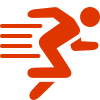
Pro Tip:
Taking regular days off between runs will help reduce inflammation caused by repetitive stress on these tendons, while also allowing for repair and adaptation during recovery periods.

Pro Tip:
Taking regular days off between runs will help reduce inflammation caused by repetitive stress on these tendons, while also allowing for repair and adaptation during recovery periods.
How to Run Correctly with Sesamoiditis and What Is Needed?
It is important for runners suffering from sesamoiditis to ensure they have the right type of shoes. Orthopedic shoes provide extra support and cushioning, which can be especially helpful for relieving foot pain associated with this condition.
It may also be beneficial to invest in comfortable sesamoiditis insoles to reduce pressure on the bones, as running generates a lot of impact on the feet. Custom-made orthotics are one of the most effective solutions when it comes to managing sesamoiditis pain, but over-the-counter orthotics can offer good support, too.
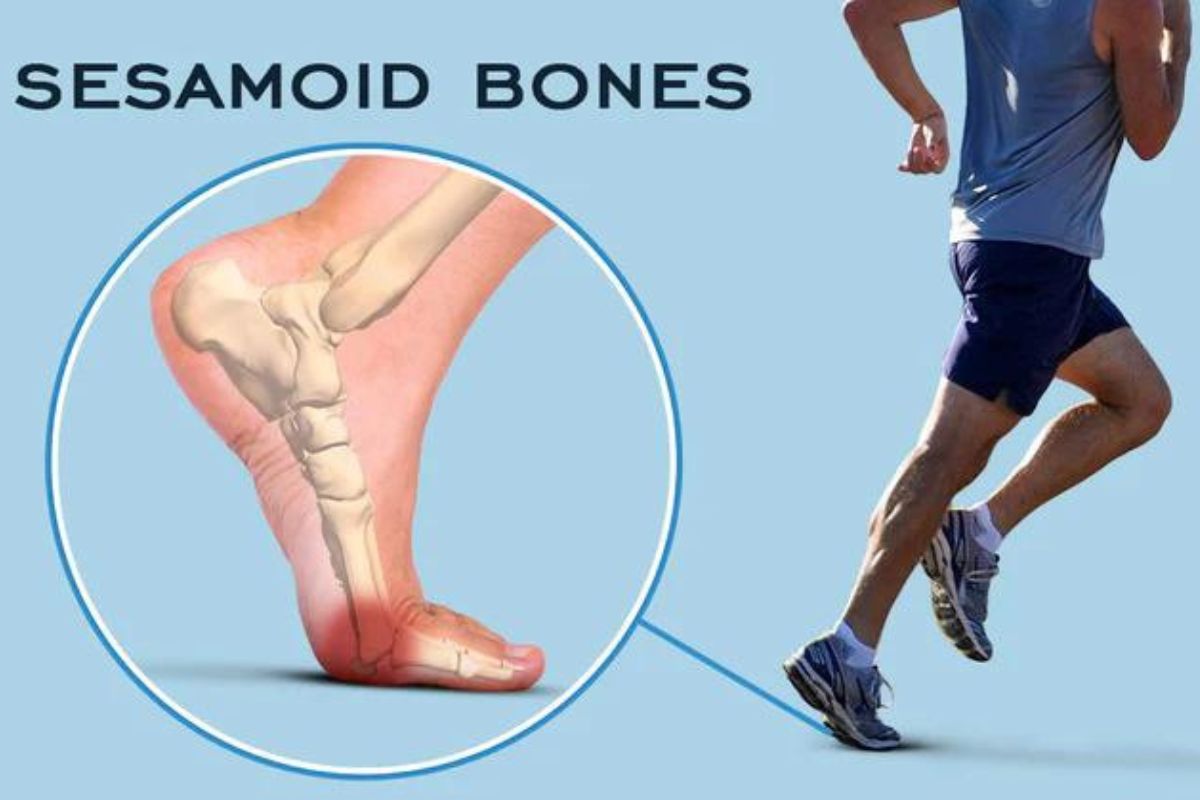
What You Need to Know When Buying Shoes for Sesamoiditis
It is important to consider several factors when selecting a shoe that will provide the best relief for runners with sesamoiditis.
1. Stiff and Rigid Sole
Stiff and rigid soles are important features of running shoes for those suffering from sesamoiditis. They provide stiffness and support without compromising on comfort or flexibility.
Stiff and rigid sole materials, such as carbon fiber plates, provide extra stability to the foot, which helps immobilize the affected area, reducing pain and discomfort associated with sesamoiditis.
Meanwhile, hard-soled shoes in combination with sesamoiditis orthotics can also help protect against developing stress fractures in areas of weak bone structure by distributing shock efficiently throughout the lower leg.
Subscribe to Our Running Newsletter!
Get free running tips from renowned professional athletes and discounts from top-notch brands.
2. Shock-Absorbing Materials
When looking for running shoes designed to help with sesamoiditis, it's important to consider the type and amount of shock-absorbing materials used in their design.
Features such as gel cushioning, air pockets, or foam midsoles are excellent for absorbing the impact created when running. They help reduce pressure on the sesamoid bones, thereby helping alleviate pain and discomfort.
3. Comfort and Support
Finding the perfect running shoe for sesamoiditis can be a daunting task. Not only do you need to balance durability and performance, but also comfort and support. When it comes to sesamoiditis, high heels are not your friend. In fact, low heel-to-toe drop shoes can provide greater relief on the sesamoids.
It's important that the shoe fits you properly, with a flexible upper and ample toe box to prevent any irritation or rubbing against the bones themselves.
Support Features of a Comfortable Running Shoe for Sesamoiditis
1. Heel Cups
Heel cups provide enhanced heel support, which helps distribute the pressure along the feet, and reduce the pressure on the sesamoid joints, helping to alleviate pain associated with sesamoiditis.
Heel cups combined with orthotics for sesamoiditis also help keep your feet securely in place within the shoe, reducing slipping and sliding during more intense activities like running or jumping.
2. Arch Support
When running, arch support can help absorb shock and reduce stress on the sesamoid bones located near your big toe joint, which are essential for controlling movement. Shoes with arch support technology can also keep your feet correctly positioned from heel to toe so you maintain correct running form.
Having the right footwear is important when it comes to preventing foot injuries like sesamoiditis, and investing in shoes with extra cushioning and good arch support will give you added protection.
3. Metatarsal Pads
Metatarsal pads are one of the first lines of defense against sesamoiditis due to their ability to reduce pressure on the affected area and provide cushioning that helps reduce pain.
They provide comfortable support by using firmer forefoot materials and soft “slipper top” sections, while also helping with correct alignment of the foot. Customizable plantar metatarsal pads with kinetic wedges or metatarsal bars can further increase comfort and relieve additional strain.
Frequently Asked Questions About Sesamoiditis Shoes
Is It OK to Run with Sesamoiditis?
Running with sesamoiditis can be extremely painful and worsen your injury. Runners with this issue should consult a healthcare professional before engaging in any activity related to running, as it could further aggravate their symptoms.
Are Zero Drop Shoes Good for Sesamoiditis?
Zero drop shoes for sesamoiditis are a great option for runners suffering from pain. These shoes have no difference between heel height and toe height, creating an even platform between the sole and foot and reducing pressure on the painful sesamoid bones.
Final Thoughts on the Best Running Shoes for Sesamoiditis
Finding the right pair of running shoes with a good fit can help alleviate sesamoiditis pain and prevent future injury. With this in mind, we’ve provided a comprehensive overview of the 8 best running shoes for 2025.
The New Balance Men's Fresh Foam X 840v1 is our top pick, as it offers cushioning and support to keep your feet comfortable during long runs or races. Look for stiff soles, shock-absorbing materials, heel cups, and arch support if you have an issue in that area.
Finally, always make sure to practice gradual training progression, stretching exercises, and proper footwear selection. Allow plenty of rest between any activities that could aggravate or exacerbate sesamoid problems.
Have you had to manage sesamoiditis while running? Please share your experience in the comments below.
Also Read:
- Running on an Empty Stomach
- Best Recovery Drink for Runners
- How to Wash Brooks Running Shoes
- Best Microspikes for Running
- How Long Does It Take To Walk 2 Miles
- Best Running Shoes for Bunions
References:
- “Choosing the Right Shoe,” Better Health Channel, https://www.betterhealth.vic.gov.au/health/healthyliving/Choosing-the-right-shoe (accessed October 26, 2023).
- “Finding the Right Running Shoes for Sesamoiditis,” McKinney Podiatric Associates, https://mpa-web.com/blog/item/1012-finding-the-right-running-shoes-for-sesamoiditis.html (accessed October 26, 2023).
- Preeti Kaur, Matthew R. Carroll, Sarah Stewart, “The Assessment and Management of Sesamoiditis: A Focus Group Study of Podiatrists in Aotearoa New Zealand,” Journal of Foot and Ankle Research 16, no. 29 (2023), https://jfootankleres.biomedcentral.com/articles/10.1186/s13047-023-00628-w
- “Sesamoiditis,” Physiopedia, https://www.physio-pedia.com/Sesamoiditis (accessed October 25, 2023).
- “Sesamoiditis and Sesamoid Fracture,” Ortho Info, https://orthoinfo.aaos.org/en/diseases--conditions/sesamoiditis (accessed October 26, 2023).
- “Sesamoiditis: Ball of Foot Pain,” Beaver Valley Foot Clinic, https://bvfootclinic.com/sesamoiditis-ball-of-foot-pain/ (accessed October 25, 2023).
Why Trust Us?
Pace Passion is committed to helping runners of all levels find the best product to improve their training and running performance. We use a comprehensive methodology for reviewing running and nutrition products for runners, so we only recommend products that we use ourselves or have had the opportunity to test. Read more about product testing here. Learn more about us here.
If you have any questions or suggestions, you can contact us via email – [email protected]

